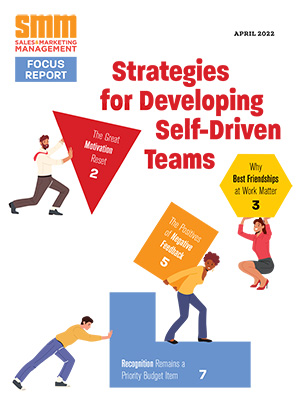Big data and predictive analytics have empowered companies to connect with customers and prospects in ways unimaginable just five years ago. Today, the emerging field of behavioral analytics is focusing the lens on internal sales organizations. Just as the FitBit helps competitive athletes fine tune their performance by giving them steady, data-driven feedback, behavioral analytics is providing unprecedented – and often surprising – insights into what makes some teams rise to the top while others fail.
Through proprietary research of Fortune 500 sales organizations, we’ve seen three key performance areas emerge as the leading indicators of sales success: customer engagement, large internal networks and effort.
On the surface, these three categories are unsurprising, but a closer look through the behavioral analytics lens reveals important, sometimes counterintuitive nuances that can make the difference between a good salesperson and a top performer.
Customer Engagement
What makes a salesperson great isn’t the amount of time he or she spends with a customer, it is how and when that time is spent, across what volume of accounts, and at what frequency. Top performers spend more time with customers per week (two to four hours per week more) but do so across fewer accounts – as much as 40% fewer in some cases.
Internal Network Strength
Our research shows that top performers spend 10 to 15 hours a week interacting with small groups inside their companies. There are three key groups that comprise an effective internal network: general, support and management.
General colleague interaction across functions and disciplines helps sales teams keep a broad perspective on what’s going on in the company and beyond. This type of awareness helps sales deliver indirect value to customers by providing broader thinking and new ideas.
Time spent interacting with management also has a direct correlation with success for sales teams. Regular interactions with managers help facilitate sales by fostering a more comprehensive understanding of what the company can offer the customer beyond the current sale, and it also helps to smooth approvals for closing deals.
Effort & Energy
Just as using a FitBit does not guarantee improved fitness unless you actually change your behavior, tracking sales performance indicators alone does not guarantee success. Top performers put in more time. Their weeks are approximately four hours longer, with up to 40% more time spent outside of normal working hours compared to their lower-performing counterparts.
A Course for Success
But simply logging more hours isn’t the answer either. It’s important to be strategic about when and where to invest additional time, so here are some suggestions:
- Encourage your team to focus more time on fewer accounts vs. less time on more accounts.
- Assist your team in developing internal networks that represent a diverse set of colleagues.
- Establish a model that enables sales representatives to consistently interact with the same support staff.
- Regularly reevaluate and adjust your strategy to ensure your team stays fit to win.
Natalie McCullough is Chief Revenue Officer for VoloMetrix, driving customer-facing operations including sales, marketing and customer solutions. For information on VoloMetrix’s people analytics solution, visitwww.volometrix.com.


